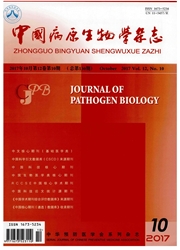

 中文摘要:
中文摘要:
细胞衰老是细胞在受到某些特定的刺激以后而被激活的一种基本的细胞应答程序。端粒酶缩短,丝裂原及增殖相关信号的活化,基因组损伤以及肿瘤抑制信号的激活等均可以诱导细胞衰老的发生。细胞一旦发生衰老,细胞即发生特征性改变:细胞变得扁平,细胞体积增大,并且伴随着溶酶体活性(SA-β-Gal)的升高。同时,细胞周期停滞在G0或G1期,而且细胞的增殖能力减弱。诱导细胞衰老的主要信号通路包括Ras-p53通路、p16-Rb通路以及p53/p16非依赖性的信号通路,如SKP2-p27相关信号通路。细胞衰老与纤维化、炎症以及癌症等多种疾病有着密切的关系。在肝纤维化过程中,可以通过促进活化的肝星状细胞的衰老以实现抑制肝纤维化。因此,探明细胞衰老的机制具有重要意义。
 英文摘要:
英文摘要:
Cellular senescence is a common cellular response triggered by various stimuli.Cellular senescence can be induced by telomere shortening,unbalanced activation of mitogenic and proliferation-related signals,genomic damage,and activation of tumor suppressive signaling.Once cells are senescent,they undergo morphological changes,i.e.they flatten and expand,as lysosomal activity(SA-β-Gal)increases.A typical feature of senescent cells is that they lose their ability to progress through the cell cycle and they instead arrest in the G0/G1 phase.In addition,senescent cells have markedly diminished proliferative capacity.The major signaling pathways that induce cell senescence include the Ras and p53 pathways,the p16-Rb pathway,and pathways independent of p53 and p16,such as the SKP2-p27 pathway.Cellular senescence is closely related to diverse diseases such as fibrosis,inflammation,and cancer.The fact that activated hepatic stellate cells play a central role in liver fibrogenesis is widely accepted.The senescence of activated hepatic stellate cells might limit the development of hepatic fibrosis by markedly inhibiting the proliferation and significantly reducing the expression of fibrogenic proteins.Thus,ascertaining the mechanisms of cellular senescence is of great significance.
 同期刊论文项目
同期刊论文项目
 同项目期刊论文
同项目期刊论文
 Schistoma japonicum soluble egg antigns induce apoptosis and inhibit activation of HSC: a possible m
Schistoma japonicum soluble egg antigns induce apoptosis and inhibit activation of HSC: a possible m Specificity Protein 1 Transcription Factor Regulates Human ARTS Promoter Activity through Multiple B
Specificity Protein 1 Transcription Factor Regulates Human ARTS Promoter Activity through Multiple B Septin4_i1 Regulates Apoptosis in Hepatic Stellate Cells through Peroxisome Proliferator-Activated R
Septin4_i1 Regulates Apoptosis in Hepatic Stellate Cells through Peroxisome Proliferator-Activated R Schistosoma japonicum Soluble Egg Antigens Facilitate Hepatic Stellate Cell Apoptosis by Downregulat
Schistosoma japonicum Soluble Egg Antigens Facilitate Hepatic Stellate Cell Apoptosis by Downregulat Schistosoma japonicum soluble egg antigens induce apoptosis and inhibit activation of hepatic stella
Schistosoma japonicum soluble egg antigens induce apoptosis and inhibit activation of hepatic stella Expression of microRNA-454 in TGF-beta 1-stimulated hepatic stellate cells and in mouse livers infec
Expression of microRNA-454 in TGF-beta 1-stimulated hepatic stellate cells and in mouse livers infec 期刊信息
期刊信息
